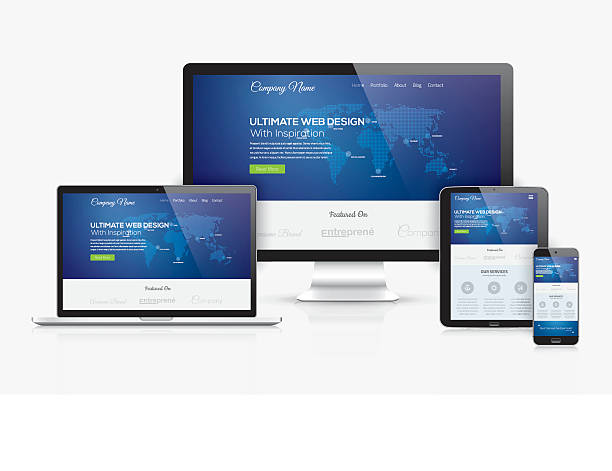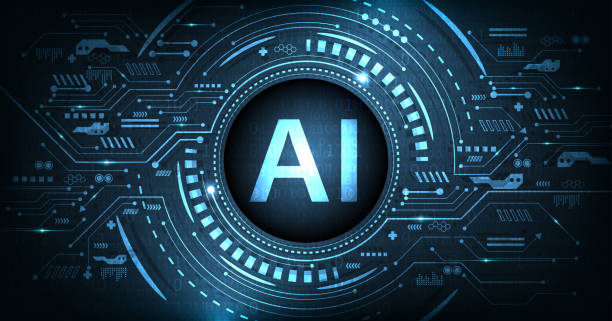Introduction to On-Page SEO and Its Importance
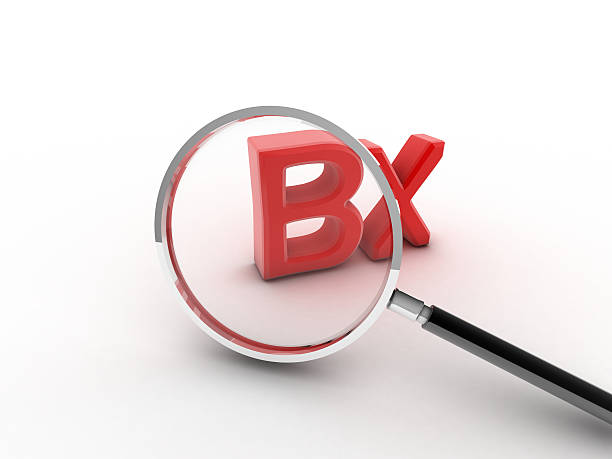
#On-Page SEO#, refers to a set of actions taken within your website and on its pages to improve its ranking in search engine results.
These actions include optimizing content, HTML tags, site structure, and many more.
The importance of On-Page SEO is vital for any website seeking visibility and organic traffic.
This aspect of SEO creates a strong foundation for other aspects of search engine optimization.
Without a solid On-Page SEO foundation, even the best off-page SEO strategies may not yield desired results.
In this explanatory and educational guide, we will show you how you can use various On-Page SEO techniques to not only improve your site’s ranking but also enhance the user experience (UX) of visitors.
This doesn’t just mean using keywords, but also ensuring that search engines correctly understand your content and deem it relevant to users.
Understanding these aspects will help you implement a comprehensive and effective SEO strategy.
Did you know that even small details like image file names can impact your On-Page SEO? This thought-provoking content question will initiate our more specialized discussions that we will cover next.
Remember that SEO success is an ongoing process and requires continuous updates and adaptation to changing search engine algorithms.
Therefore, proper training and implementation of On-Page SEO techniques are of paramount importance.
Is your company’s website as professional and trustworthy as it should be? With specialized corporate website design by Rasawweb, create an online presence that reflects your credibility and attracts more customers.
✅ Create a powerful and professional image of your brand
✅ Convert visitors into real customers
⚡ Get free consultation now!
Keywords and Their Role in On-Page SEO
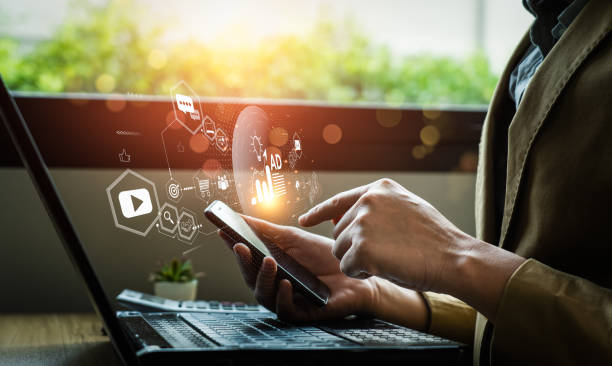
#Keywords# are the backbone of any On-Page SEO strategy.
Finding the right keywords and using them correctly helps search engines understand the main topic of your page and display it to users looking for relevant information.
This process begins with keyword research; a phase where you identify the phrases and terms your target audience uses to find similar products, services, or information.
Tools like Google Keyword Planner, Ahrefs, and SEMrush can provide expert guidance at this stage.
After identifying keywords, the next step is keyword targeting.
This means naturally and intelligently integrating keywords into your page’s content.
This includes the page title, meta description, subheadings (H1, H2, H3, etc.), main text, and even image alternative text (Alt text).
It’s important to avoid “Keyword Stuffing”, as this method not only harms your On-Page SEO but also disrupts the user experience.
Modern Google algorithms are far more sophisticated than to be fooled by mere keyword repetition; they look for high-quality, relevant content that addresses user needs.
For example, if your keyword is “best laptop for programming,” you should naturally use this phrase and its synonyms throughout your content.
Also, using related keywords or LSI Keywords (Latent Semantic Indexing), such as “laptop technical specifications,” “processor performance,” and “RAM,” helps Google better understand the overall topic of your page.
This analytical and precise approach ensures that your page ranks for a wider range of searches and directs more targeted traffic to your site.
Content Optimization for On-Page SEO

#Content# is king, and optimizing it for On-Page SEO is one of the most critical steps.
Your content should not only be optimized for search engines but also provide real value to your readers.
A high-quality and comprehensive content reduces bounce rate (Bounce Rate) and increases user dwell time (Dwell Time), both of which are positive signals for search engines.
To optimize content, you must first properly structure your content.
Using headings and subheadings (H1, H2, H3, etc.) hierarchically helps search engines and users easily understand the structure and main topics of the text.
In addition to structure, content readability is also very important.
Use short paragraphs, simple and fluid sentences, and lists and bullet points to break down information.
This makes it easier for users to read and digest information.
Also, create specialized and unique content.
Copied or low-value content not only won’t help your ranking but may also be penalized by Google’s algorithms.
Ensure your content answers user questions and provides comprehensive and accurate information.
This educational approach helps you create content that is both engaging for users and understandable for search engines.
Regular content updates are also part of the On-Page SEO strategy.
Outdated content may have obsolete information and lose its appeal.
By updating and adding new information, you not only show search engines that your site is active but also assure users that the information they receive is valid and up-to-date.
Below, an explanatory table for important content optimization aspects is provided:
| Optimization Factor | Description | Importance in On-Page SEO |
|---|---|---|
| Content Quality and Comprehensiveness | Providing accurate, complete, and user-need-responsive information. | Very High: Core of user satisfaction and ranking. |
| Natural Keyword Usage | Intelligent placement of primary and secondary keywords without overdoing it. | High: Helps search engines understand the topic. |
| Content Readability and Structure | Using short paragraphs, lists, H1-H6 headings. | High: Improves user experience and content comprehension. |
| Content Freshness and Up-to-dateness | Regularly updating information and adding new sections. | Medium to High: Indicates site dynamism and credibility. |
| Media and Visual Elements | Using relevant and optimized images, videos, and infographics. | Medium: Increases engagement and dwell time. |
URL Structure and Its Importance
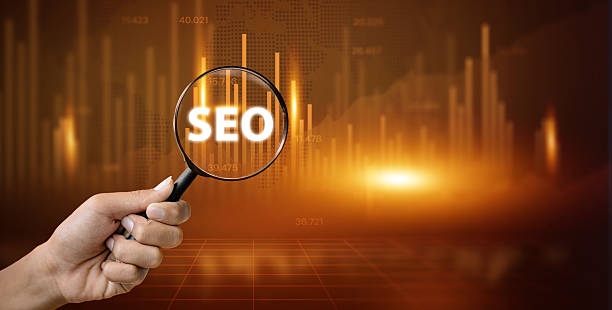
#URL Structure#, also known as a web address, is an important part of On-Page SEO that is often overlooked.
An optimized URL not only helps search engines understand your website’s structure and page content but is also more understandable and appealing to users.
Clean and descriptive URLs can improve click-through rates (CTR) in search results.
An SEO-friendly URL should be short, relevant, and contain keywords.
When designing your URL structure, use the main keywords of the page.
For example, instead of an address like `yoursite.com/page?id=12345`, an address like `yoursite.com/blog/comprehensive-on-page-seo-guide` is much better.
Avoid conjunctions (like “and”, “or”, “in”) as much as possible, and instead use hyphens (-) to separate words.
Using slashes (/) to indicate hierarchy can also help search engines understand your site’s structure, like `yoursite.com/category/subcategory/article-title`.
This acts as an explanatory guide for search engines.
Also, ensure your URLs remain constant.
Constantly changing URLs can harm your On-Page SEO, as previous links might break and force search engines to recrawl and re-index your pages.
If you need to change a URL, always use a 301 Redirect to preserve the authority of previous links.
This is a specialized but essential step to maintain your SEO ranking.
An optimized URL indicates an organized and professional site that values user experience and SEO metrics.
Are your URLs like this too? This thought-provoking content helps you take a closer look at this crucial aspect of your SEO.
Do you know the first impression customers have of your company is your website? With a powerful corporate site from Rasawweb, multiply your business’s credibility!
✅ Custom and eye-catching design tailored to your brand
✅ Improved user experience and increased customer attraction
⚡ Get free consultation now!
Title Tags and Meta Descriptions
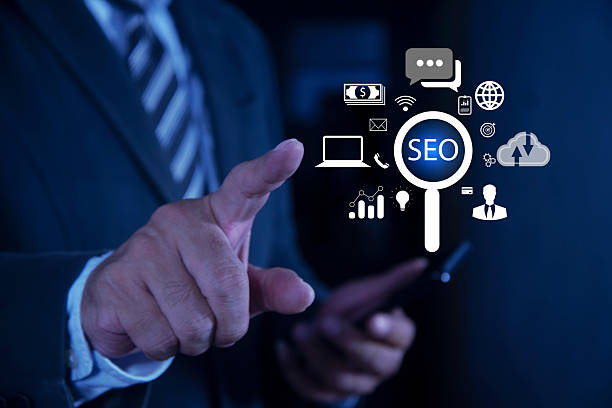
#Title Tags# and #Meta Descriptions# are two very important elements in On-Page SEO that directly impact your click-through rate (CTR) in the search engine results page (SERP).
The title tag is the clickable headline displayed in search results that tells browsers, users, and search engines what your page is about.
The meta description is also a brief summary of your page’s content that appears below the title in the SERP and entices users to click.
To optimize the title tag, you should make it engaging and relevant to your page’s content.
Place your main keyword at the beginning of the title and ensure its length is between 50 to 60 characters to be fully displayed.
Avoid duplicate titles across different pages, as this confuses search engines and users.
A good title not only helps with On-Page SEO but also highlights its educational content.
The meta description, although not directly affecting SEO ranking, plays a vital role in attracting users and increasing CTR.
Consider it a brief advertisement for your page.
Use relevant keywords and entice users to click by offering an attractive proposition or answering a question.
The standard length for meta descriptions is about 150 to 160 characters.
Ensure that each page has a unique meta description tailored to its content.
This specialized and precise approach to tag optimization can make a big difference in the amount of traffic coming to your site and is a crucial part of your On-Page SEO strategy.
Image Optimization for On-Page SEO
![]()
#Image Optimization# is an often-forgotten but vital component of On-Page SEO.
Images not only improve user experience and make your content more engaging but can also be valuable sources of organic traffic through image search.
Proper image optimization can help your page load quickly and provide search engines with more information about your visual content.
The first step in image optimization is file size compression.
Large images can significantly slow down page loading speed, which is an important factor in SEO ranking.
Use image compression tools (like TinyPNG or ImageOptim) and consider modern image formats like WebP, which combine high quality with smaller file sizes.
This is a practical guide that can have a significant impact on your site’s performance.
The second step is to use descriptive Alt Text (Alternative Text).
Alt Text provides a description of the image content and is useful for users who cannot view the image (e.g., visually impaired users using screen readers) or if the image fails to load.
This text also helps search engines understand the image content and rank it in image search.
Ensure your Alt Text includes relevant keywords, but avoid keyword stuffing.
Image file names should also be descriptive; instead of `IMG_001.jpg`, use `on-page-seo-guide-2023.jpg`.
These small details collectively help strengthen On-Page SEO.
This is a specialized approach to optimal image usage that not only improves your site’s appearance but also enhances its discoverability.
Internal Linking and Its Value
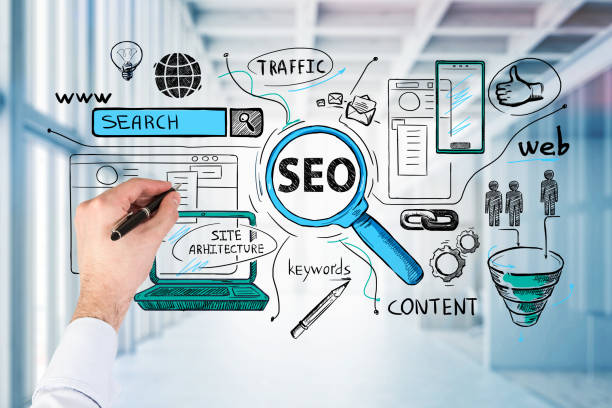
#Internal Linking# is one of the most powerful On-Page SEO tools that allows you to distribute “SEO juice” or “Link Juice” throughout your website.
Internal links are links that point from one page on your domain to another page within the same domain.
These links serve several key purposes: they help users navigate your site, show your site’s information hierarchy to search engines, and distribute page authority across your site.
Creating a strong internal linking structure shows search engines which of your pages are more important and how different pages are related to each other.
For example, if you have a comprehensive article on “How to Optimize On-Page SEO,” you can link from it to more related and detailed articles such as “Keyword Research” or “Image Optimization.”
This helps search engines understand the semantic relationship between your pages.
Using appropriate Anchor Text is also very important.
Anchor text should be descriptive and relevant to the destination page, and include relevant keywords.
Using internal links can also help reduce bounce rate and increase user dwell time on your site.
When users can easily find relevant information on your site, they are more likely to stay longer and view more pages.
This is an analytical and guiding strategy that is not only beneficial for On-Page SEO but also significantly improves user experience.
Below, an explanatory table for best internal linking practices is provided:
| Linking Factor | Description | Impact on On-Page SEO |
|---|---|---|
| Using Appropriate Anchor Text | Anchor text should be descriptive and include keywords relevant to the destination page. | Increases keyword authority and content understanding by search engines. |
| Diversity in Internal Links | Linking from high-authority pages to more important pages and vice-versa. | Distributes Link Juice and improves overall ranking. |
| Linking to Relevant and Deep Content | Linking to related articles and pages that provide supplementary information. | Increases user dwell time and reduces bounce rate. |
| Avoiding Broken Links | Regular review and fixing of broken (404) links. | Prevents ranking drop and improves user experience. |
| Using Navigational Links | Links present in menus, footers, and sidebars. | Helps site navigation and structure understanding by search engines. |
Website Load Speed and On-Page SEO
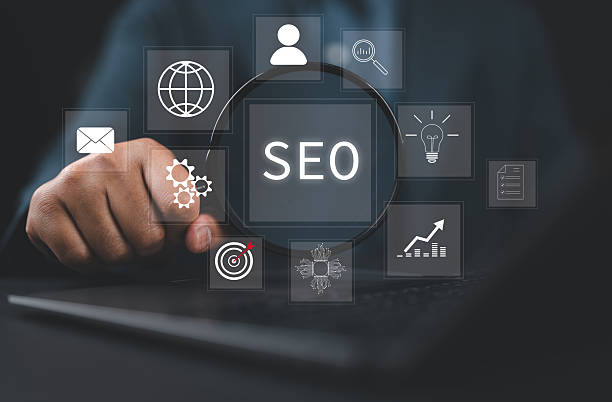
#Website Load Speed# is one of the most important factors in On-Page SEO that directly affects user experience and your ranking in search engines.
Studies have shown that users expect a website to load in less than 2-3 seconds, and any additional delay can lead to an increased bounce rate.
Google and other search engines consider page speed an important ranking factor, as they aim to provide the best possible experience to their users.
This is an important and analytical news for every webmaster.
You can take various actions to improve your site’s speed.
The first step is image optimization, as explained in previous sections.
Image compression, using appropriate formats, and lazy loading can have a significant impact.
Second, is compressing CSS and JavaScript files.
Removing whitespace, comments, and unnecessary code from these files can reduce their size and increase loading speed.
Also, using browser and server caching can significantly increase your site’s speed.
This prevents the browser from needing to re-download all files on subsequent visits.
Choosing a reliable and high-speed hosting also plays a crucial role.
Using a CDN (Content Delivery Network) to deliver content to users from the closest server can also increase speed, especially for sites with global audiences.
Tools like Google PageSpeed Insights help you identify your site’s speed issues and get solutions to improve them.
These actions are essential for any On-Page SEO strategy aiming for real results.
Do you know the first impression customers have of your company is your website? With a powerful corporate site from Rasawweb, multiply your business’s credibility!
✅ Custom and eye-catching design tailored to your brand
✅ Improved user experience and increased customer attraction
⚡ Get free consultation now!
The Importance of User Experience (UX) in On-Page SEO
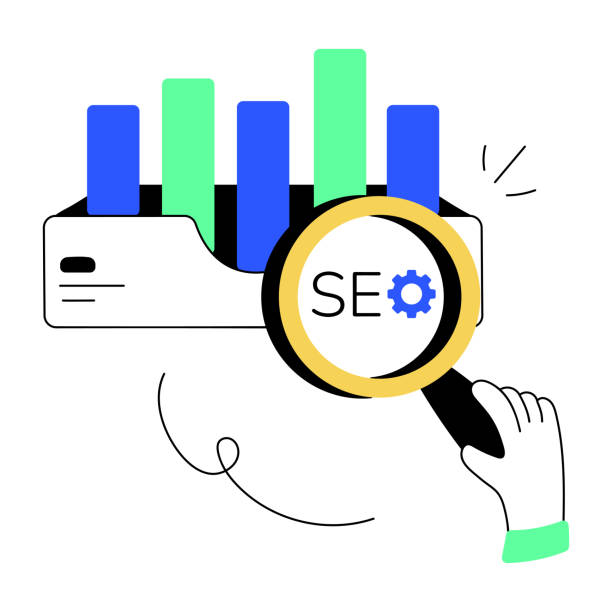
#User Experience# (UX) and On-Page SEO are two sides of the same coin.
While SEO focuses on improving website visibility in search engines, UX focuses on creating a positive and meaningful user experience.
But the truth is, excellent UX can indirectly, but powerfully, impact SEO.
Search engines, especially Google, have configured their algorithms to reward sites that provide the best experience to their users.
This is a thought-provoking question as to why some sites, despite having excellent content, don’t rank well; often the answer lies in UX.
Factors such as Bounce Rate, Dwell Time, and the number of pages visited per session are all signals that search engines use to evaluate the quality of user experience on your site.
If users quickly leave your site (high bounce rate) or spend little time on it (low dwell time), this indicates to search engines that your site has not met their needs and can harm your SEO ranking.
Therefore, designing a website that is user-friendly, easy to navigate, and visually appealing is crucial for On-Page SEO.
To improve your UX and consequently your On-Page SEO, pay attention to the following: Responsive Design to ensure proper site display on various devices, easy navigation and clear menus, distinct Call-to-Action buttons, and providing high-quality, readable content.
Also, reducing intrusive pop-ups and excessive advertisements that disrupt the user experience is of paramount importance.
This engaging yet analytical approach shows that On-Page SEO goes beyond keywords and includes all aspects that affect user satisfaction.
Website Security (HTTPS) and Its Impact on On-Page SEO
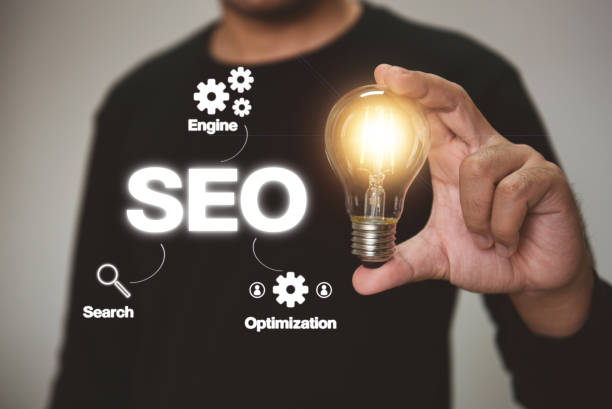
#Website Security#, especially the use of the HTTPS protocol, has been recognized as a ranking factor in Google’s algorithm since 2014.
This means that websites using HTTPS can have a slight ranking advantage over those still using HTTP.
But beyond that, HTTPS is essential for On-Page SEO and especially for gaining user trust.
HTTPS encrypts information exchanged between the user and the website, preventing eavesdropping and data manipulation.
This is a specialized guide for maintaining data security.
When users visit an HTTPS website, they see a padlock icon in their browser’s address bar, indicating a secure connection.
This icon assures users that their personal and financial information is safe.
In contrast, browsers often flag HTTP websites as “not secure,” which can deter users from entering or conducting transactions on your site, leading to a higher bounce rate and ultimately harming your On-Page SEO.
From an educational perspective, migrating to HTTPS is a fundamental step in building a reliable and high-quality website.
Migrating from HTTP to HTTPS involves installing an SSL/TLS certificate on your web server.
This process might seem a bit complex, but its benefits, including improved SEO ranking, increased user trust, and better data protection, make the effort worthwhile.
After migration, it’s crucial to use 301 redirects to guide all HTTP traffic to HTTPS so that no links are lost and SEO authority is preserved.
This is an important news for the future of the web and is essential for any website looking for long-term success in the online space.
Frequently Asked Questions
| Question | Answer |
|---|---|
| What is On-Page SEO? | It refers to the set of actions performed within a website to improve its ranking in search engines. |
| Why is On-Page SEO important? | Because it helps search engines better understand your site’s content and structure, and it improves user experience. |
| What are the most important elements of On-Page SEO? | Title and meta descriptions, keywords, URL structure, quality content, image optimization, internal linking, and site speed. |
| How to optimize Title Tag and Meta Description? | The title should include the main keyword and be engaging, and the meta description should be a compelling summary of the content with relevant keywords. |
| What is the role of keywords in On-Page SEO? | Keywords inform search engines what the page content is about and should be used naturally and intelligently within the text. |
| How is image optimization for On-Page SEO done? | By compressing size, using descriptive file names, and filling the Alt tag with relevant descriptions and keywords. |
| What is Internal Linking and what is its purpose? | It’s connecting different pages of the site to each other. This helps distribute page authority and improves search engine crawling. |
| What is the importance of site load speed in On-Page SEO? | High speed improves user experience and is one of the important ranking factors for search engines like Google. |
| What impact does site responsiveness (Mobile-Friendliness) have on On-Page SEO? | Given the increase in mobile users, responsiveness is essential for providing a suitable user experience on all devices and for Google’s mobile-first indexing priority. |
| What are the important content-related factors in On-Page SEO? | Originality, quality, comprehensiveness, readability, proper use of headings (H1, H2,…), and regular content updates. |
Other services of Rasa Web Advertising Agency in the field of advertising
Smart advertising campaign: An innovative service for increasing customer behavior analysis through precise audience targeting.
Smart direct marketing: Transform digital branding with the help of SEO-driven content strategy.
Smart direct marketing: Designed for businesses seeking digital branding through an SEO-driven content strategy.
Smart sales automation: An innovative platform to improve click-through rate increase by optimizing key pages.
Smart direct marketing: Designed for businesses seeking digital branding through custom programming.
And over hundreds of other services in internet advertising, advertising consultation, and organizational solutions.
Internet Advertising | Advertising Strategy | Advertorials
Sources
- Comprehensive On-Page SEO Guide on Rankp Blog
- What is On-Page SEO? A Comprehensive Guide from SEO24
- Improve Site Ranking with On-Page SEO – Webram
- Key On-Page SEO Tips for Webmasters – Modirweb
? Is your business ready to leap into the digital world? Rasaweb Afarin Digital Marketing Agency paves your path to online success by providing comprehensive services including advanced e-commerce website design, professional SEO optimization, and effective social media strategies. Contact us for more information and expert consultation.
📍 Tehran, Mirdamad Street, next to Bank Markazi, Southern Kazeroon Alley, Ramin Alley, No. 6

